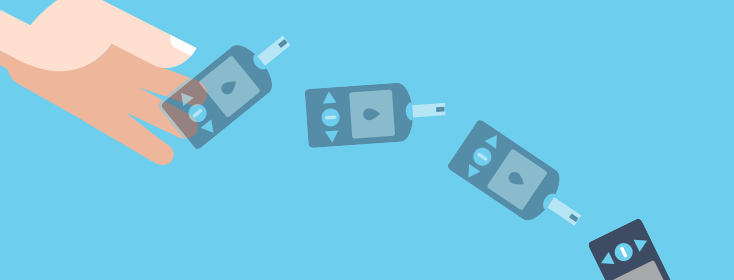Keeping My Monitor In Check
I read a really great article on type2diabetes.com the other day. I even ventured out and made a comment (ok, a couple comments) but it got me thinking. There are so many little tips and tricks we can use to support ourselves that I have learned over the years. The one I’m sharing is ensuring the meter is doing its job and staying within that 15-20% accuracy. This is a regulation that the glucose monitoring companies have to abide by. But this is only one factor that impacts on the accuracy.
Have you ever dropped your meter? How about a couple of times? I can honestly say, I’m not always the most coordinated person in the world so…the meter has been dropped before…ok, a few times. Usually because I’m in a hurry trying to get my testing done and move on to the next task I have to accomplish. I cringe each time it happens because, let’s face it, I need my monitor in order to ensure I am doing what I can to support myself being as healthy as I can be living with diabetes.
Bring the monitor to the lab
One tip I have learned is that I can bring my monitor to the lab with me when I get my blood work done so the two numbers can be compared. Here’s how it works, at least in my area. I let the lab folks know when I get there that I’d like to have my monitor compared to the blood work. Just before they take my blood, they will have me do my finger prick with my monitor. They write my number on the lab slip and make a note that it’s for comparison. If there is a difference beyond the 15-20%, then that will be noted on the lab results. How cool is that? Now, they have also recommended only needing to do this once a year, however they don’t know me…recall I drop my meter…more than once… I have never had them tell me they can’t/won’t etc. If the lab is swamped, I’ll wait to have it checked the next time my blood work is due. Keep in mind, I’m not on insulin, so waiting until the next time is not as big a deal unless I really believe that I have pooched the meter. If I were on insulin, then it would be essential that I have a meter I can rely on.
Control solution
The other tip is the use of control solution. When I got my first meter, I didn’t know what that was. It was written in the monitor manual but I guess I was probably a little overwhelmed at the time of the diagnosis and missed that. When I finally did find out about it, I went to the drug store to buy some. Well, being that I am basically cheap, I didn’t want to spend the money for it. As time went on, and I realized I drop my monitor now and then (have I mentioned that before?), I started to wonder if that was my best decision. I called the manufacturer of my monitor and asked how else I could tell if it was accurate, they offered to send me the control solution for free…really? Yup. I like free. It seems to be a practice across many of the companies too because I have had monitors over the years by different companies and they are pretty forthcoming in telling me to call them if I need it. Again, pretty cool! My philosophy is that it never hurts to ask but I also try and remember that “No” is an acceptable answer. I must admit though, I like “Yes” better.
My meter lives a real life with me so I always need a back-up plan!

Join the conversation